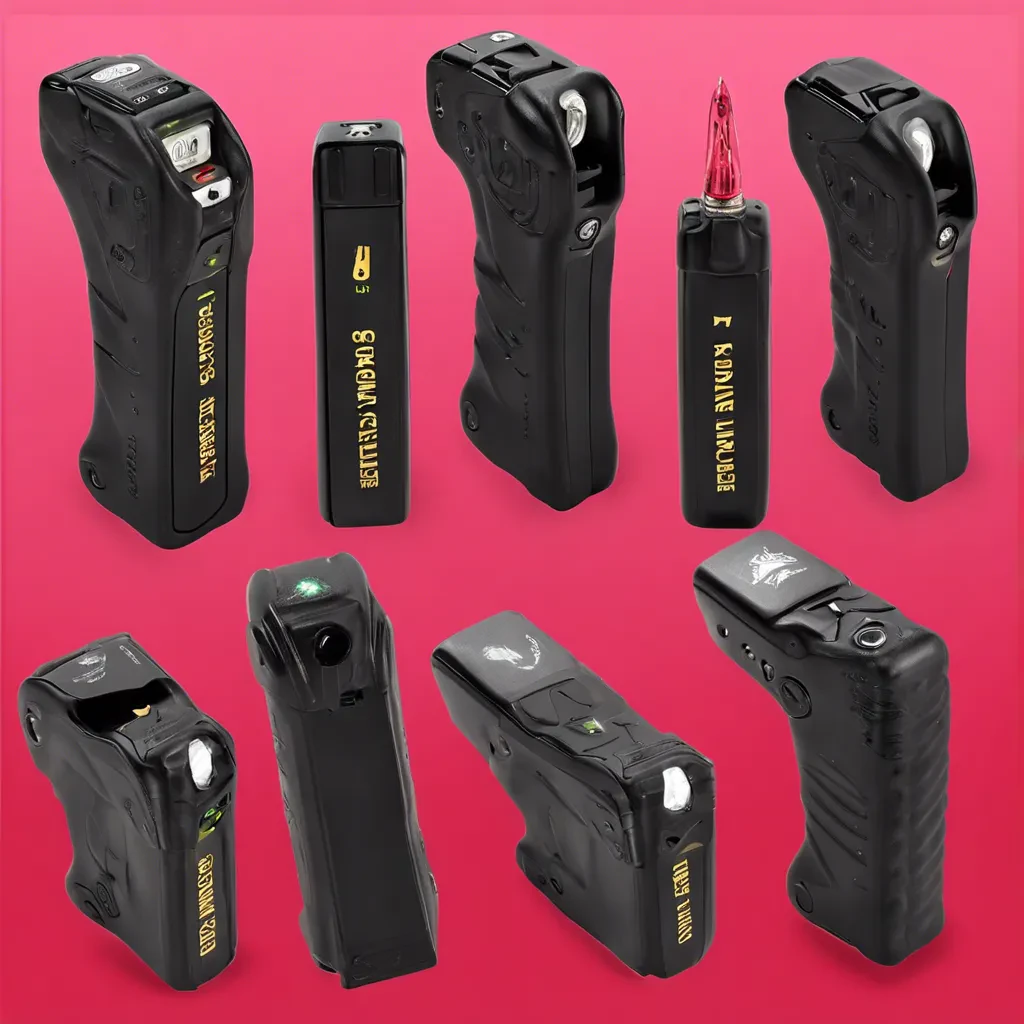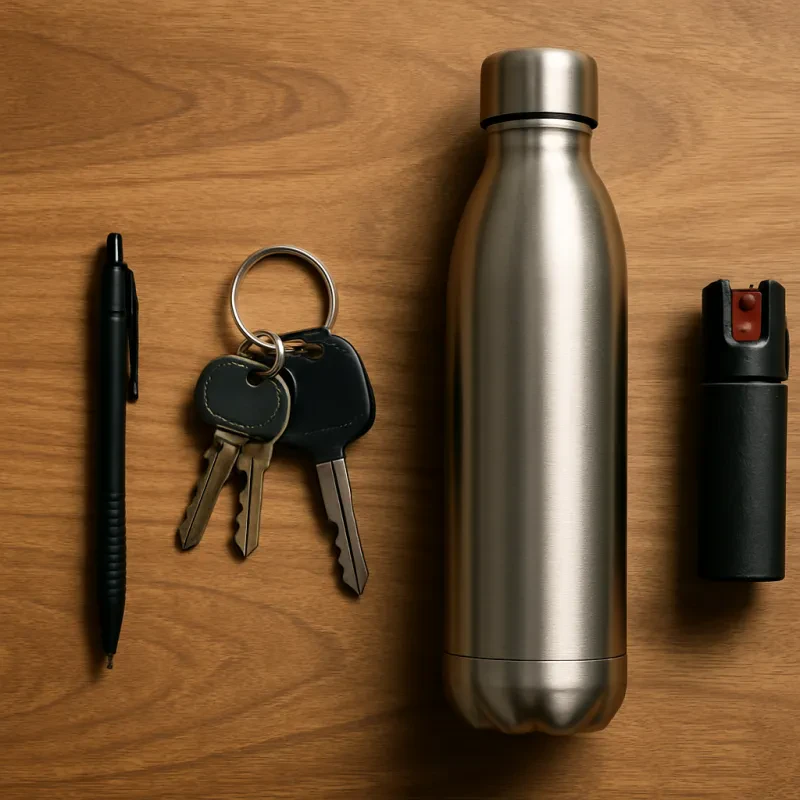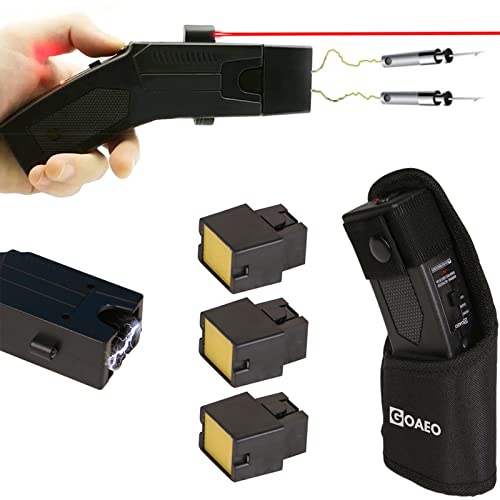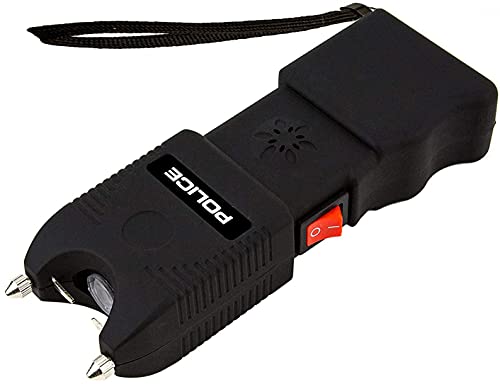Introduction to Tasers and Stun Guns
Tasers and stun guns represent two prominent options in the realm of personal protection devices, often selected for their ability to incapacitate an assailant temporarily. While they are frequently conflated, significant distinctions exist between these two tools. Understanding these differences begins with a basic overview of each device’s functionalities, origins, and development over time.
A taser, an acronym for “Thomas A. Swift’s Electric Rifle,” is a brand-specific term that has become synonymous with conducted electrical weapons. Tasers operate by firing two small dart-like electrodes that remain connected to the main unit by conductive wires. Upon contact with the target, the taser delivers a high-voltage, low-current electrical shock, disrupting voluntary control of muscles and causing temporary paralysis. This mechanism allows for distance between the user and the threat, typically ranging from 15 to 35 feet, depending on the model.
Conversely, a stun gun requires direct contact with the assailant to administer an electrical shock. These devices are generally smaller and more compact than tasers, making them easier to carry and conceal. Stun guns function by delivering a high-voltage shock that incapacitates the assailant through pain and muscle disruption, although they do not typically cause full paralysis like tasers. The immediate and localized nature of stun guns means they are often used in close-quarter situations where physical contact is unavoidable.
The evolution of these devices dates back to the late 20th century, with tasers being developed in the 1970s by NASA researcher Jack Cover. The concept aimed to provide law enforcement agencies with a non-lethal alternative to firearms. Stun guns, on the other hand, emerged in the 1990s, offering a more accessible and practical option for civilians seeking personal protection. Over the years, both devices have undergone significant technological advancements, enhancing their effectiveness and reliability.
Today, tasers and stun guns are widely used by law enforcement officers, security personnel, and private citizens alike. Their popularity stems from their ability to provide a non-lethal means of self-defense, offering a safer alternative to traditional weaponry. Common usage scenarios include personal protection during travel, home defense, and as a precautionary measure in potentially dangerous environments.
As we delve deeper into the specifics of tasers and stun guns, it is essential to understand their fundamental distinctions and the contexts in which each device excels. This foundational knowledge sets the stage for a nuanced comparison, aiding individuals in making informed decisions about their personal safety tools.
Key Differences Between Tasers and Stun Guns
Tasers and stun guns are both popular choices for personal protection, but they differ significantly in their design, range, mode of operation, and effectiveness. Understanding these differences is crucial for selecting the right tool for your personal safety needs.
One of the primary differences between tasers and stun guns is their operational range. Tasers are designed to incapacitate a target from a distance by firing projectiles attached to wires. These projectiles deliver an electric shock that disrupts the target’s neuromuscular system, effectively immobilizing them. The typical range for a taser is between 15 to 35 feet, making it ideal for situations where maintaining distance is critical.
In contrast, stun guns require direct contact with the target to deliver an electric shock. The device must be pressed against the assailant’s body, which then emits a high-voltage, low-amperage electric current. This direct contact induces pain and muscle contractions, which can temporarily immobilize the attacker. However, the need for close proximity can be a disadvantage in some scenarios.
The design of these devices also varies. Tasers are often shaped like a handgun, complete with a trigger mechanism, making them intuitive for many users. They also typically have a laser sight to aid in aiming. On the other hand, stun guns come in various shapes and sizes, from flashlight-like designs to smaller, more concealable models. This variety can make stun guns more versatile and easier to carry discreetly.
When it comes to ease of use, tasers generally require less precision in stressful situations due to their range. However, they often come with a higher price tag and may require more extensive maintenance. Stun guns, while requiring closer proximity, are usually more affordable and simpler to maintain. They also typically do not require the same level of training as tasers.
In summary, the choice between a taser and a stun gun depends on various factors including the user’s comfort level, intended use, and budget. Both devices offer unique advantages for personal protection, and understanding their key differences can help in making an informed decision.
Using Tasers and Stun Guns for Personal Safety
When considering personal safety devices like tasers and stun guns, it is crucial to understand how to use them effectively in self-defense situations. These tools can provide a significant advantage when employed correctly, but they require proper knowledge and handling to ensure they are used safely and effectively.
First and foremost, familiarize yourself with the operation of your chosen device. For tasers, which deliver an incapacitating electric shock via projectiles, it is essential to practice aiming and firing. Most tasers have a laser sight to help with accuracy, but it’s still vital to understand the device’s range and how to replace the cartridges. Stun guns, on the other hand, require direct contact with the assailant’s body to deliver a shock. Practice holding the stun gun firmly and activating it quickly to ensure you can respond under stress.
Situational awareness is a key component of personal safety. Always be conscious of your surroundings and potential threats. If you feel unsafe, trust your instincts and prepare your device for use. In enclosed spaces like your home, a taser can offer a distance advantage, while a stun gun may be more appropriate for close encounters during personal carry.
Choosing the right device depends on your specific needs. For home defense, a taser might be preferable due to its ability to incapacitate an intruder from a distance. For personal carry, especially in public places where close encounters are more likely, a stun gun can be more practical due to its compact size and ease of use.
There are numerous testimonials of individuals successfully defending themselves with these devices. For instance, a woman in a parking lot used her stun gun to deter a potential mugger, giving her enough time to escape and call for help. Another example involves a homeowner who used a taser to incapacitate a home intruder until law enforcement arrived.
Ultimately, the effectiveness of tasers and stun guns in personal protection hinges on proper usage and situational awareness. By understanding your device, practicing its use, and staying alert to your environment, you can significantly enhance your personal safety.
Safety Precautions and Legal Considerations
When it comes to personal protection devices like tasers and stun guns, understanding and adhering to safety precautions is paramount. Proper handling, storage, and maintenance of these devices are crucial to prevent unintended injuries or accidents. Users should always ensure that tasers and stun guns are kept in a secure location, away from children and unauthorized individuals. Regularly inspecting the device for any signs of wear or damage and following the manufacturer’s guidelines for maintenance can aid in ensuring the device functions correctly when needed.
Equally important are the legal considerations associated with owning and using tasers and stun guns, which can vary significantly by jurisdiction. Before purchasing or carrying one of these devices, it is essential to research and understand the specific laws and regulations in your area. Some regions may require permits or have restrictions on carrying tasers or stun guns in public places. In other areas, their use may be entirely prohibited. Ignorance of these laws can lead to severe legal consequences, including fines and imprisonment.
To stay compliant, individuals should consult local law enforcement agencies or legal experts to obtain up-to-date information on the legal status of tasers and stun guns in their region. Additionally, taking a certified training course on the safe and legal use of these devices can provide valuable knowledge and increase confidence in handling them responsibly.
In summary, the safe and legal use of tasers and stun guns requires a comprehensive approach that includes proper handling, secure storage, regular maintenance, and adherence to local laws. By taking these precautions and staying informed about legal requirements, users can ensure that they are using these personal protection devices responsibly and effectively.







